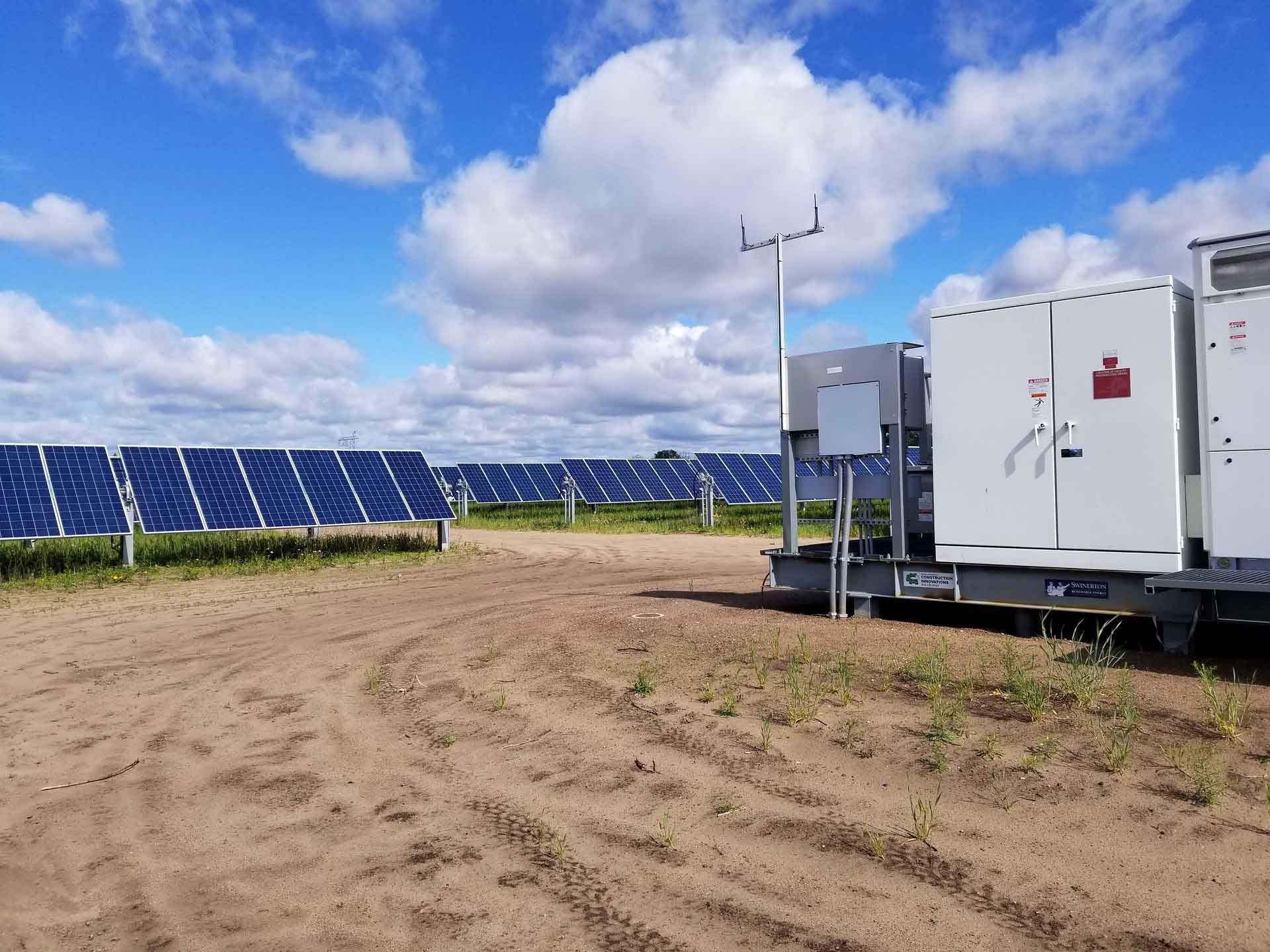Inverter stations are pivotal for large-scale renewable energy production, particularly in solar and wind power plants, where they perform crucial roles in converting and managing the electricity generated. These stations not only convert the direct current (DC) produced by renewable sources into alternating current (AC) compatible with the grid but also ensure the efficient, reliable, and safe integration of renewable energy into the electrical system. Here’s a detailed look at how inverter stations facilitate large-scale renewable energy production:

Conversion of DC to AC
- Primary Function: The fundamental role of inverter stations in solar and wind farms is to convert DC (from solar panels or DC output from wind turbine generators) into AC, which is the form of electricity used by the electrical grid and most end-users. This conversion is essential because it allows the energy produced by renewable sources to be utilized in homes, businesses, and industries without needing additional conversion devices.
Maximizing Energy Output
- Maximum Power Point Tracking (MPPT): Advanced inverters equipped with MPPT technology optimize the power output from solar panels by constantly adjusting the electrical load to ensure the panels operate at their most efficient point. This technology is crucial for maximizing the energy harvest from each panel, particularly under varying weather conditions.
- Efficiency Optimization: In wind energy systems, similar optimization techniques are applied to ensure that turbines operate efficiently across a range of wind speeds, maximizing energy production.
Grid Integration and Stability
- Synchronization: Inverter stations ensure that the AC electricity they feed into the grid matches the grid’s frequency and voltage, a process known as synchronization. This is critical for the seamless integration of large-scale renewable energy into the existing power grid.
- Reactive Power Control: Modern inverters can provide reactive power (VAR support) to help maintain voltage levels within the desired range, enhancing grid stability and allowing for higher penetration of renewable energy sources.
- Grid Support Services: Inverters in large-scale installations can offer grid support services, such as frequency regulation and load balancing, which are essential for maintaining grid reliability, especially as the share of variable renewable energy sources grows.
Reliability and Safety
- Anti-Islanding Protection: Inverter stations include safety features such as anti-islanding protection, which automatically disconnects the renewable energy installation from the grid in the event of a power outage. This protection is crucial for the safety of maintenance workers and the general public.
- System Monitoring and Control: Advanced monitoring and control capabilities allow operators to track the performance of renewable energy installations in real-time, identify and rectify issues promptly, and optimize system performance. This enhances the overall reliability of the energy supply.
Enhancing Energy Storage Integration
- Battery Storage Systems: Inverter stations play a key role in integrating battery storage systems with renewable energy installations. They manage the charging and discharging processes, ensuring that excess energy produced can be stored and used when production is low, thereby enhancing the flexibility and reliability of renewable energy sources.
Supporting Decentralized Energy Systems
- Microgrids and Distributed Generation: Inverter technology facilitates the development of microgrids and distributed generation systems, where renewable energy can be produced and consumed locally. Inverters enable these systems to operate independently of the main grid, providing reliable power to remote or isolated areas.
Inverter stations are indispensable in large-scale renewable energy production, serving not only as the bridge between renewable energy generation and grid integration but also as a key enabler of efficient, reliable, and safe energy supply. As renewable energy continues to grow in importance in the global energy mix, the role of inverter stations in managing and optimizing these systems will become increasingly critical.
